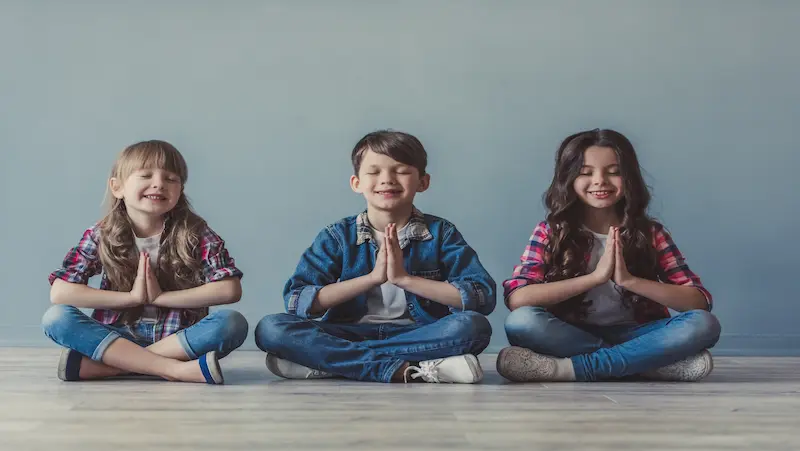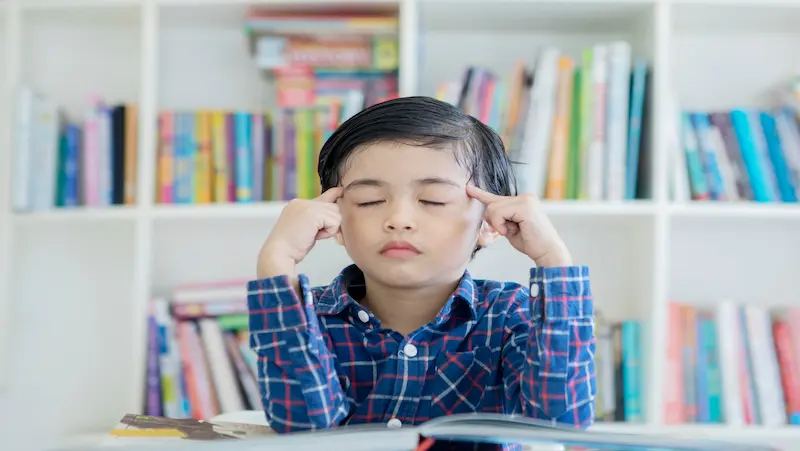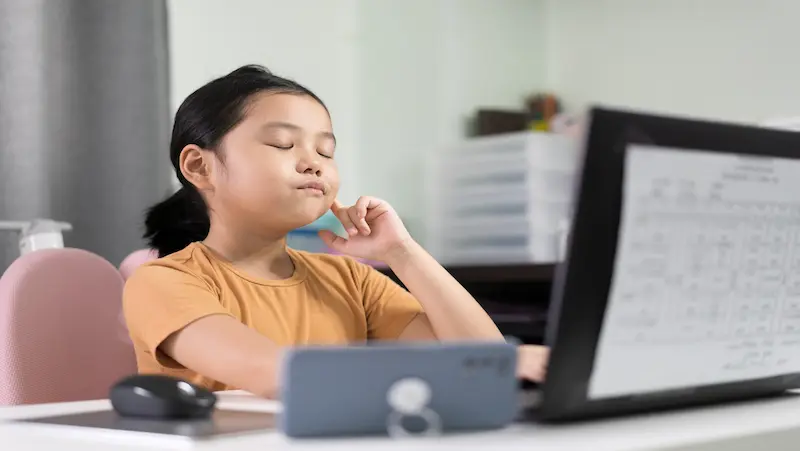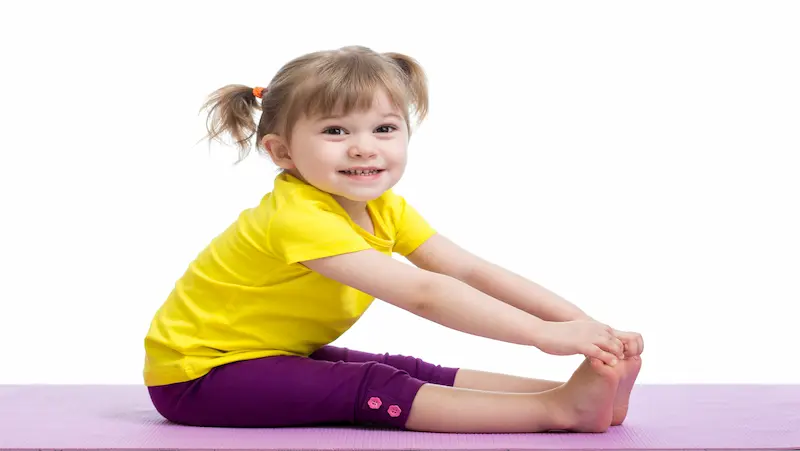Introducing meditation to children at an early age can be a transformative gift that sets the stage for a lifetime of emotional well-being and inner balance. In today’s fast-paced world, where stress and distractions abound, giving children the tools to cultivate mindfulness and inner peace is more important than ever.
Table of contents
Benefits of Meditation for Kids
Mindfulness meditation for kids is a valuable practice that helps them develop focus and emotional awareness. Encouraging them to sit comfortably, close their eyes gently, and take deep breaths while paying attention to their breath can promote relaxation and self-regulation.

Enhancing Mental Health and Focus:
Mindfulness exercises for children can help improve concentration and focus, allowing them to excel in their academic pursuits and daily activities.
By teaching kids to observe their thoughts and emotions without judgement, mindfulness meditation fosters emotional resilience and positive mental health.
Click here to know about coding app for kids
Developing Self-Awareness and Emotional Regulation:
Mindfulness activities for children encourage self-reflection and awareness of their own emotions and reactions.
By practising mindfulness, kids learn to recognize and regulate their emotions, promoting healthier relationships and improved overall well-being.
Mindful Breathing Activities

Mindfulness breathing for kids is a simple technique that helps them stay present and calm.
Teaching children simple breathing exercises can help them relax and find a sense of calm. Try these techniques:
Bunny Breath:
Instruct your child to take a deep breath in through their nose, imagining they are smelling a beautiful flower.
Then, have them exhale slowly through their mouth, pretending to blow out a candle. Repeat several times.
Starfish Breath:
Ask your child to stretch out their fingers like a starfish.
Inhale deeply, and as they exhale, have them slowly curl their fingers back to their palm. Repeat a few times, focusing on the breath and movement.
Guided Visualisation for Kids

Engaging your child’s imagination through creative visualisation exercises can promote a sense of calm and relaxation. Try these visualisations:
Journey to the Beach:
Guide your child to imagine walking barefoot on a warm, sandy beach, feeling the gentle breeze and hearing the soothing sound of waves.
Exploring a Magical Forest:
Encourage your child to visualise walking through a lush forest, noticing vibrant colours, and encountering friendly woodland creatures.
Mindful Movement and Yoga

Combining mindfulness meditation for kids with yoga can create a soothing and holistic practice for kids.
Try these activities:
Tree Pose:
Teach your child to stand tall like a tree, grounding their feet and reaching their arms up high, finding balance and stability.
Butterfly Breath:
Have your child sit cross-legged and place their hands on their chest.
Instruct them to take a deep breath in, imagining their chest rising like butterfly wings, and exhale slowly as the wings come back down.
Sensory Meditation Activities
Incorporating the senses into meditation practice makes it more engaging. Try these sensory activities:

Mindful Eating:
Encourage your child to mindfully savour a small piece of fruit, paying attention to its texture, taste, and smell.
Sound Exploration:
Provide nature sounds or a singing bowl for your child to focus on, allowing them to tune in and appreciate the soundscape.
Creative Expression through Meditation
Encouraging self-expression alongside meditation can deepen the experience for children. Try these creative activities:

Meditation Journal:
Suggest your child create a journal to write or draw their thoughts, feelings, and experiences during meditation.
Emotion Art:
Invite your child to draw or paint their emotions, using colours and shapes to express how they feel during meditation.
Incorporating Technology:
Utilise technology to make meditation enjoyable for kids. Explore these resources:

Meditation Apps:
Recommend child-friendly meditation apps like “Calm Kids” or “Headspace for Kids” that provide guided meditations designed specifically for children.
Interactive Meditation Games:
Point out interactive games that combine meditation and playfulness, fostering engagement and making the practice enjoyable for kids.
Mindful Practices for Everyday Life
Integrating mindfulness into daily routines can cultivate lasting benefits for children. Consider these tips:
Mindful Mealtime:

Encourage your child to savour each bite, paying attention to the flavours, textures, and smells of their food.
Also, Engaging in mindfulness games for kids can make the practice enjoyable for kids.
Bedtime Mindfulness:
Establish a bedtime routine that incorporates mindfulness, such as deep breathing exercises or a calming guided meditation.
If you desire to gain additional information regarding robotics class for kids
Conclusion
By making meditation a fun and enjoyable experience for kids, parents can help their children develop vital skills for emotional well-being and mental resilience. Explore the various activities we have shared, and adapt them to suit your child’s interests and preferences.
Through mindfulness meditation, children can unleash their inner peace and embrace a playful approach to serenity, paving the way for a happier and healthier future.
Explore the BrightCHAMPS page to discover educational insights, tips, and strategies to enhance your child’s learning experience. Learn about money management for kids also.
Frequently Asked Questions(FAQ’s)
A1: Meditation is a practice that involves training the mind to focus and redirect thoughts, ultimately achieving a state of mental clarity and calm. For kids, meditation is crucial because it promotes emotional well-being, enhances concentration, reduces stress and anxiety, improves self-awareness, and cultivates a sense of inner peace and resilience.
A2: Introducing meditation to children can be done in a playful manner. You can use storytelling, creative visualisation, or incorporate movement and sensory activities into their meditation practice. By making it interactive, using age-appropriate language, and keeping sessions short and varied, you can engage your child and make meditation enjoyable.
A3: Yes, mindfulness activities can be tailored to different age groups. For younger children, activities like mindful breathing games, simple visualisations, or yoga poses with animal themes can be engaging. Older children can benefit from more complex breathing exercises, guided visualizations, and journaling about their experiences.
A4: Short, focused meditation sessions are ideal for children with shorter attention spans. Use interactive techniques such as incorporating movement, props, or engaging their senses during the practice. Vary the activities to keep them interested and gradually increase the duration of meditation as their attention span develops.
A5: Sure! Here are a few ideas:
“Mindful Scavenger Hunt”: Encourage your child to find and observe objects in their environment using their senses.
“Emotion Charades”: Act out different emotions, and have your child guess and discuss how each emotion feels in their body.
“Mindful Listening”: Play a sound or music, and ask your child to focus on the subtle details and variations they can hear.
A6: Yes, there are several great resources and apps available:
Calm Kids
Headspace for Kids
Smiling Mind
Stop, Breathe & Think Kids
A7: To create a conducive environment for meditation at home:
Find a quiet space where distractions are minimised.
Use soft lighting and calming scents, like lavender.
Provide comfortable cushions or mats for sitting or lying down.
Play soft instrumental music or nature sounds in the background, if desired.
A8: The benefits of meditation for kids include improved focus and concentration, reduced stress and anxiety, enhanced emotional regulation and resilience, increased self-awareness, better sleep, improved social skills, and an overall sense of well-being and inner peace.
A9: The duration and frequency of meditation for children can vary depending on their age and individual preferences. Start with short sessions of 5-10 minutes and gradually increase the duration as they become more comfortable. Aim for consistency rather than long sessions, and encourage daily practice to reap the benefits.
A10: Absolutely! For children who struggle with sitting still, you can incorporate movement-based practices like mindful walking, yoga, or dance. Engage their senses by using props, such as stress balls or textured objects to hold during meditation.


 We are an army of educators and passionate learners from BrightChamps family, committed to providing free learning resources to kids, parents & students.
We are an army of educators and passionate learners from BrightChamps family, committed to providing free learning resources to kids, parents & students.













